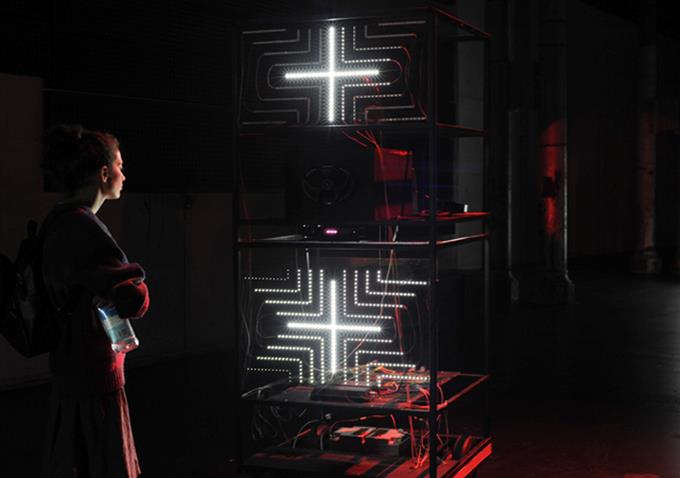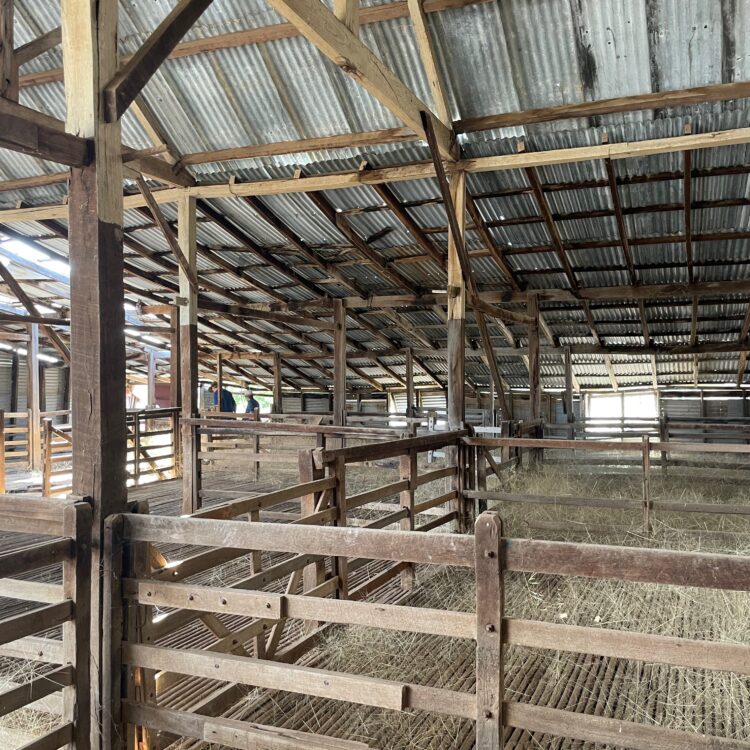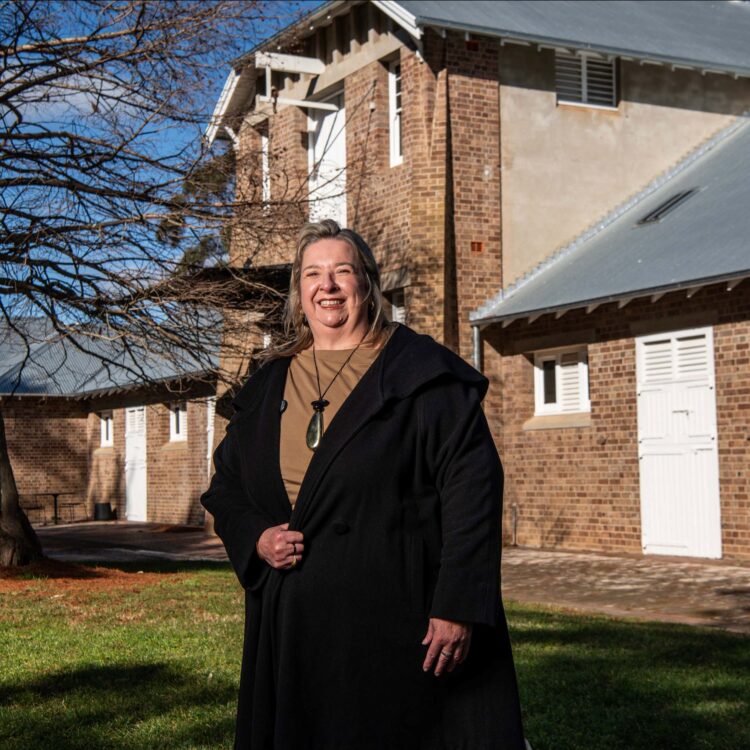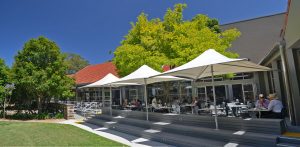
Wade Marynowsky (robotic artist) in collaboration with Julian Knowles (music/sound) and Branch Nebula (lighting, dramaturgy), Robot Opera, 2015
Wade Marynowsky (robotic artist) in collaboration with Julian Knowles (music/sound) and Branch Nebula (lighting, dramaturgy), Robot Opera, 2015,robots: 8” steel frames 2300 x 900 x 90mm, electronics, motors, sensors, light, sound, code. Installation: wifi network, custom LX, custom surround sound. Original performance 35mins. Photos by Heidrun Lohr.
Six significant contemporary artists from throughout Australia, whose practice brings science, technology, engineering, maths and art together will showcase their brand new ‘creations’ at Hazelhurst Regional Gallery opening July 22.
The exhibition, DREAM MACHINES, curated by Hazelhurst Gallery Curator, Carrie Kibbler, will showcase five ‘dream machines’ including 8 robots, ‘who’ will interact with visitors in the exhibition space.
The artists are James Dodd (Adelaide), Cameron Robbins (Melbourne), Tricky Walsh (Hobart) and Sydney-based Dr Wade Marynowsky and collaborative artists, David Lawrey & Jaki Middleton.
Belinda Hanrahan, Director of Hazelhurst Regional Gallery said ‘people will be in awe when they see these machines working. Only an ingenius mind could ‘imagine’ and then construct these machines. Each artist has harmoniously, resourcefully and creatively used art, science, technology and engineering to create their ‘dream machine’.
DREAM MACHINES
22 July to 17 September – 10am to 5pm
Hazelhurst Regional Gallery
782 Kingsway, Gymea NSW
James Dodd’s practice is predominantly painting which is integrated with installations and modified bicycles. Painting Mill will be his project for Hazelhurst. This grew out of his interest in simple machines and how they might be considered within a visual art context. He’s interested in ideas of hacking and re-purposing; the creative outputs from suburban backyard sheds; and the adaptation of pre-existing and often utilitarian objects. In the Painting Mill, Dodd has taken plywood, simple mechanics, a bike and cordless drills, and built them into a machine that can be used for making paintings. The machine, which he describes as a ‘mutant power tool’ is then controlled via a joystick, implying a sense of video gaming or remote control. Aside from the construction and presentation of the machine, there are also performative and experimental elements to the work which enables the audience to engage with the artist as he demonstrates how the machine works and produces the paintings.
Dr Wade Marynowsky specialises in experimental and emerging art forms, including robotics, immersive and interactive installation, performance, music and video. Since 1998 Marynowsky has established himself as a leading artist in the field of new media arts, achieving significant critical praise and international recognition for his performances and exhibitions. A reconfigured installation based on Marynowsky’s 2015 work Robot Opera features 8 semi-autonomous robots. The work is informed by the underlying fields of creative robotics, mediastised performance, music and interactive media art. The project fast forwards the Wagnerian concept of (Gesamtkunstwerk) ‘The Total Art Work’ (1895) into the present, through combinations of movement, sound, light and interaction. Whilst futuristic, Robot Opera, draws on a multitude of historic reference points, visually the work embraces minimalist sculpture and the machine aesthetic. An engaging and dynamic interactive installation, with an underlying sense of anticipation and anxiety that asks – will machines one day be more intelligent than humans? In 2014 the National Gallery of Victoria held Marynowsky’s first major survey exhibition ‘Nostalgia for Obsolete Futures’, and his work ‘The Acconci Robot’ featured in The International Triennial of New Media Art, National Art Museum of China.
David Lawrey & Jaki Middleton are Sydney based artists whose practice draws inspiration from the themes and aesthetics of popular forms of entertainment both past and present. They are especially interested in pre-cinematic optical illusions, traditional museum displays, miniature models and theatrical magic; and the way these mediums have been used to explore existential questions and supernatural possibilities. They combine elements of these outmoded mediums with cinematically influenced scenes that for us symbolize recurring psychological crises relating to life, death, work, human relationships and contemporary challenges. Central to their work is a preoccupation with an in-between state: the twilight space between seeing and knowing, natural and supernatural, existence and absence, aspiration and action. For DREAM MACHINES, Lawrey and Middleton are developing a new series of automaton based works using vintage gramophone motors. The artists have conceived 3 individual scenes that will form the series with the working mechanics visible beneath the model. Each scene will involve a domestic space in which the automaton figure repeats an action, which reflects an anxious, in between state. These include the Kitchen: a figure kneels on the floor, rubbing with a cloth a stain that refuses to budge; Bedroom: a figure tosses and turns in a bed, unable to sleep, and Living room: a figure attempts to pull him/herself up out of a manhole in the floor, but fails, falling back down. Visitors will be able to activate the works by cranking a handle.
Cameron Robbins creates structural devices including solar, kinetic wind or water powered mechanical systems that are result of both careful engineering and resourcefulness. The resulting physical outputs include solar and wind drawings and sound compositions. These interpretations of the dynamics and scale of the physical world suggest the complexities of the unknown. His work for this exhibition, Shadow Phase, was commissioned by Hazelhurst Gallery and was developed during a studio residency in January 2017. The site specific work features an outdoor solar panel to detect light and power a motor that will drive the drawing arm which makes marks on a sheet of paper that slowly rotates on a roller at around one rotation per week in the gallery. The resulting drawings will indicate the amount of light detected by the solar panel that is situated in Hazelhurst’s gardens – from dense marks on bright sunny days, to softer marks on cloudy days or an absence of marks at night. Robbins recent major solo exhibition and permanent wind installation, FIELD LINES, was held at the Museum of Old and New Art, Tasmania.
Tricky Walsh develops theoretical machines which are based on speculative science and the imaginary machine concept. For DREAM MACHINES Walsh is creating a new work titled THz (Terahertz transceiver). The intricate sculptural work, accompanied by a large scale, notated engineering drawing, is constructed from hand-carved balsa wood combined with fibre optics and light engines. Thz is a communication device. It receives radio waves, amplifies them in its resonant cavity into the terahertz range, embeds them onto a light wave and converts that original RF into an optical signal. Theoretically, it would be worked a bit like morse-code with the spectrum-based telegraph key. Walsh says: ‘My ongoing overarching research subject can be broadly defined as ‘The Electromagnetic spectrum.’ From Ultra-low to ultra-high frequencies, it encompasses the multiplicity of communication methods which are of particular interest to me.’ She continues: ‘I’m vastly interested in that point in time when invention occurs. It is something that artists and scientists (and backyard inventors) share – the ability to imagine something into existence that has not existed before, or to show it in a new light. It’s the point of suspending disbelief, the point of what-if’s, and in some ways, the point where everything before and after ceases to exist, and even gravity takes a break.’




